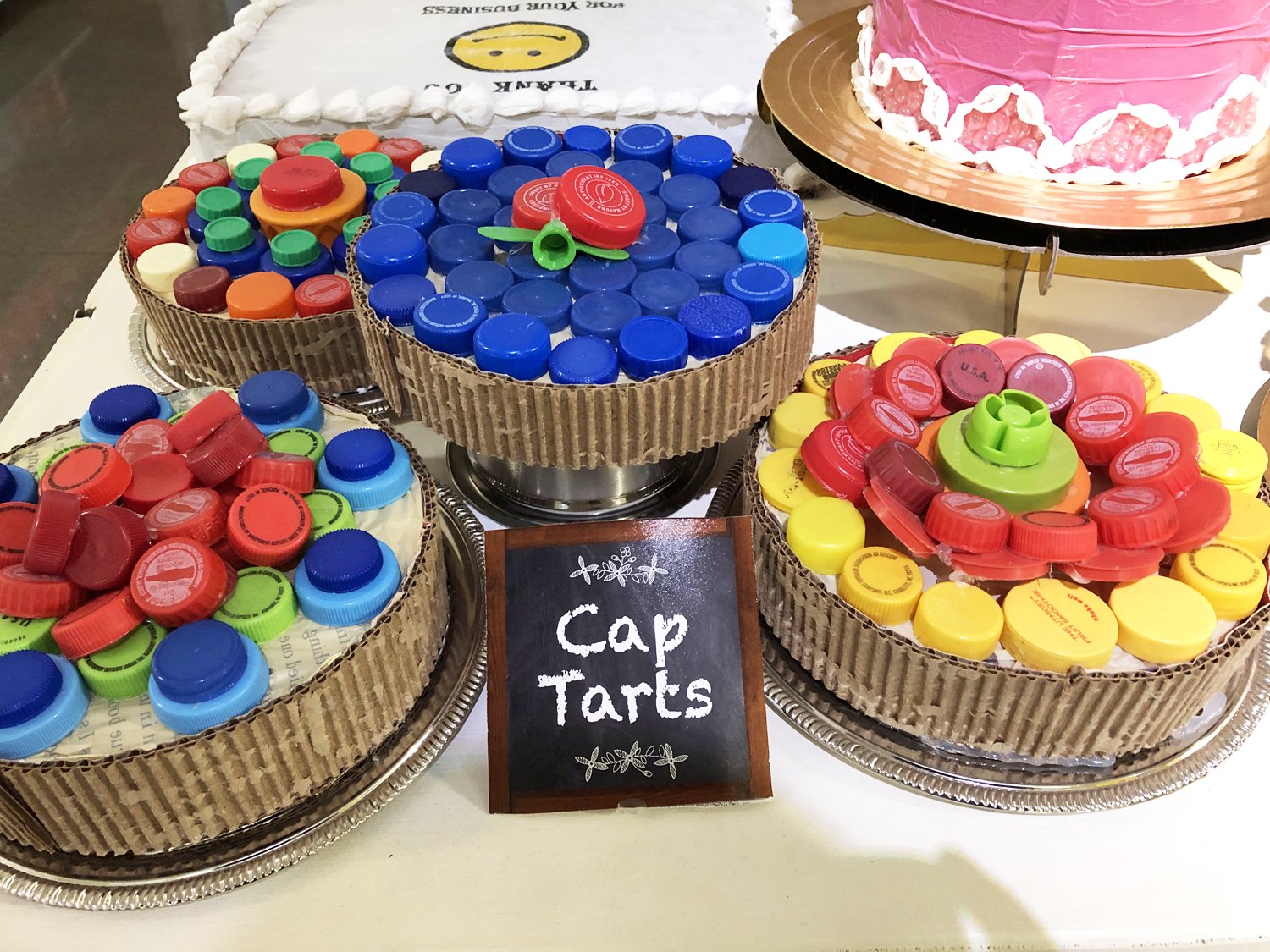
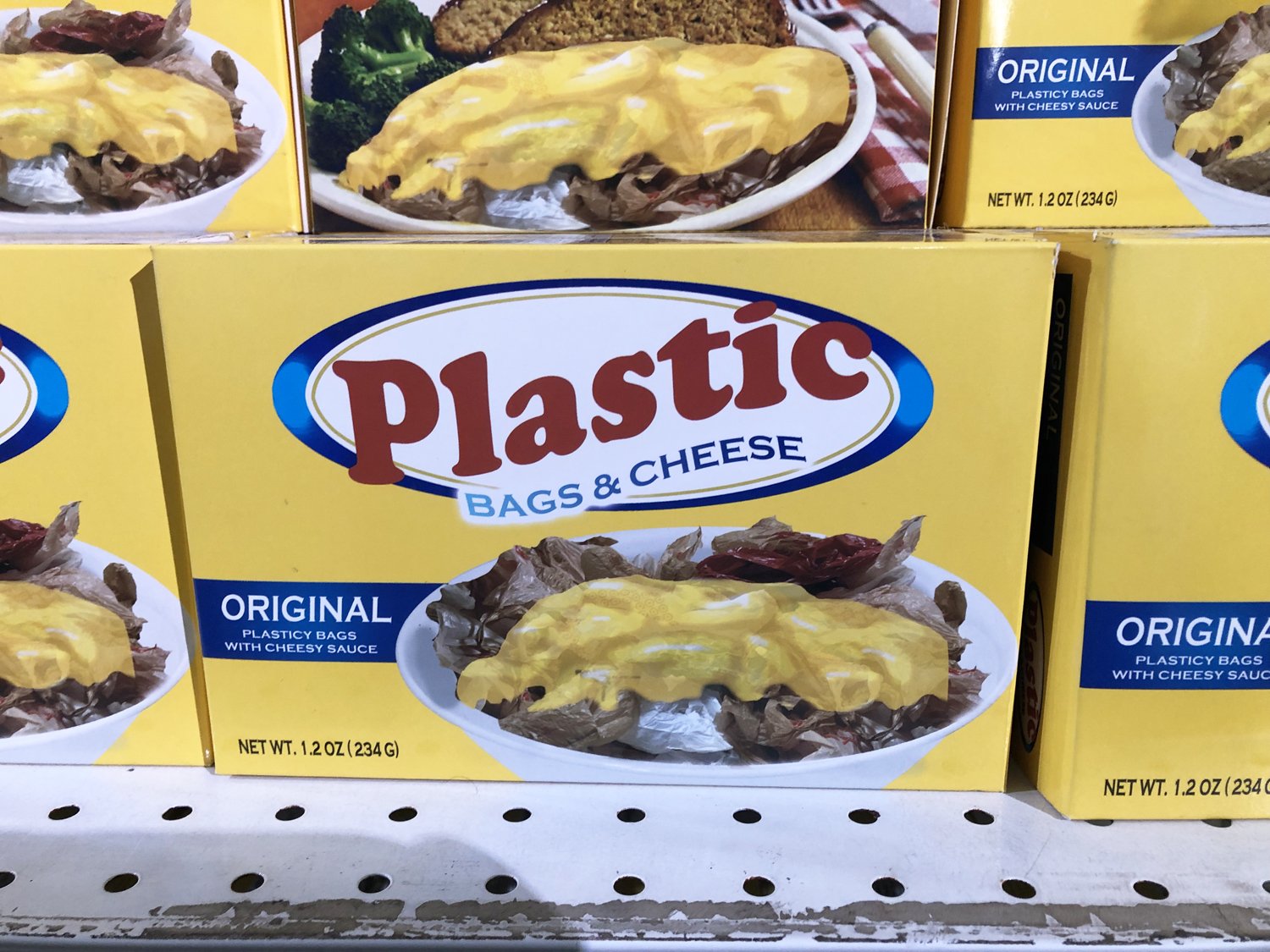
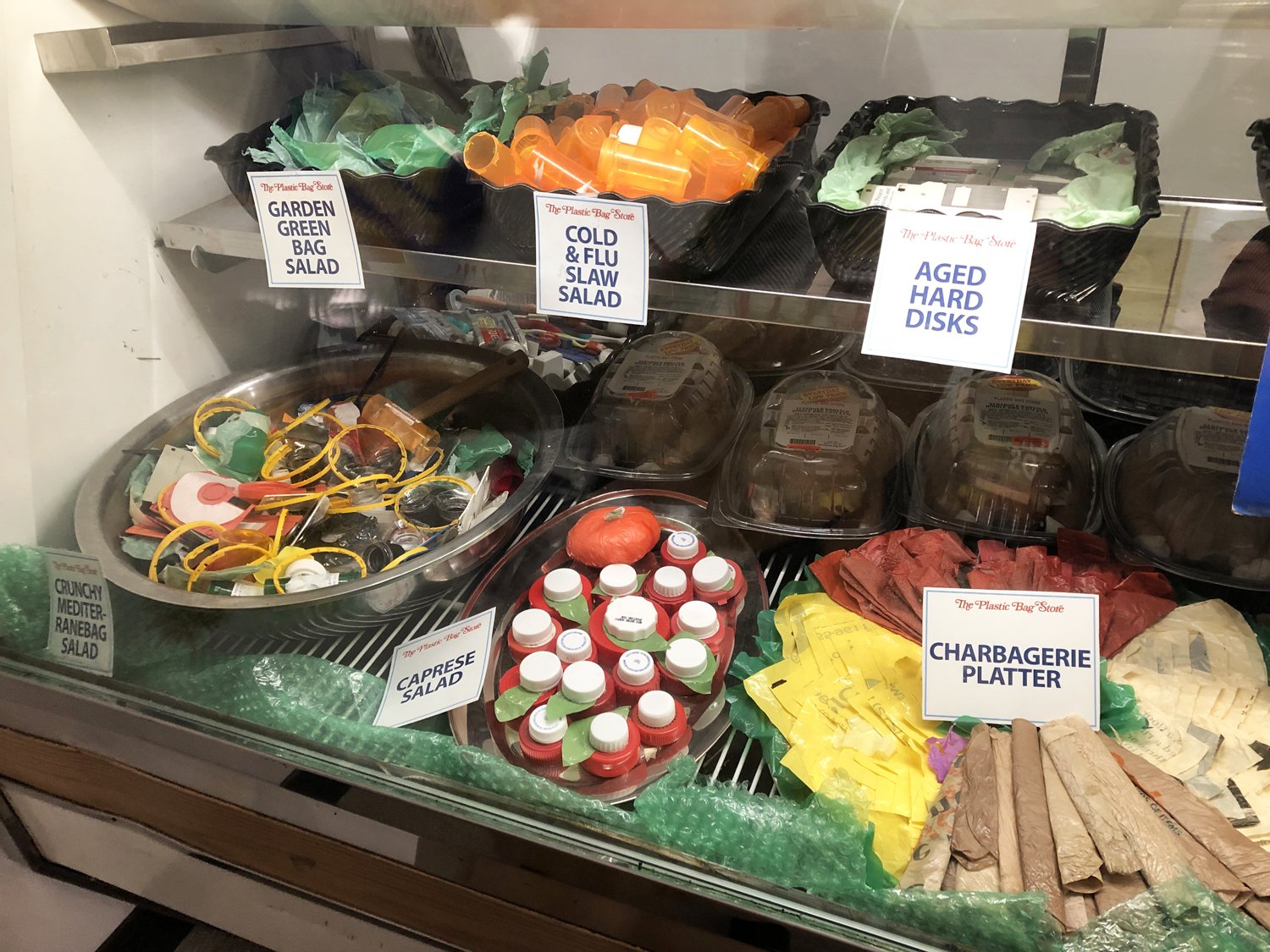
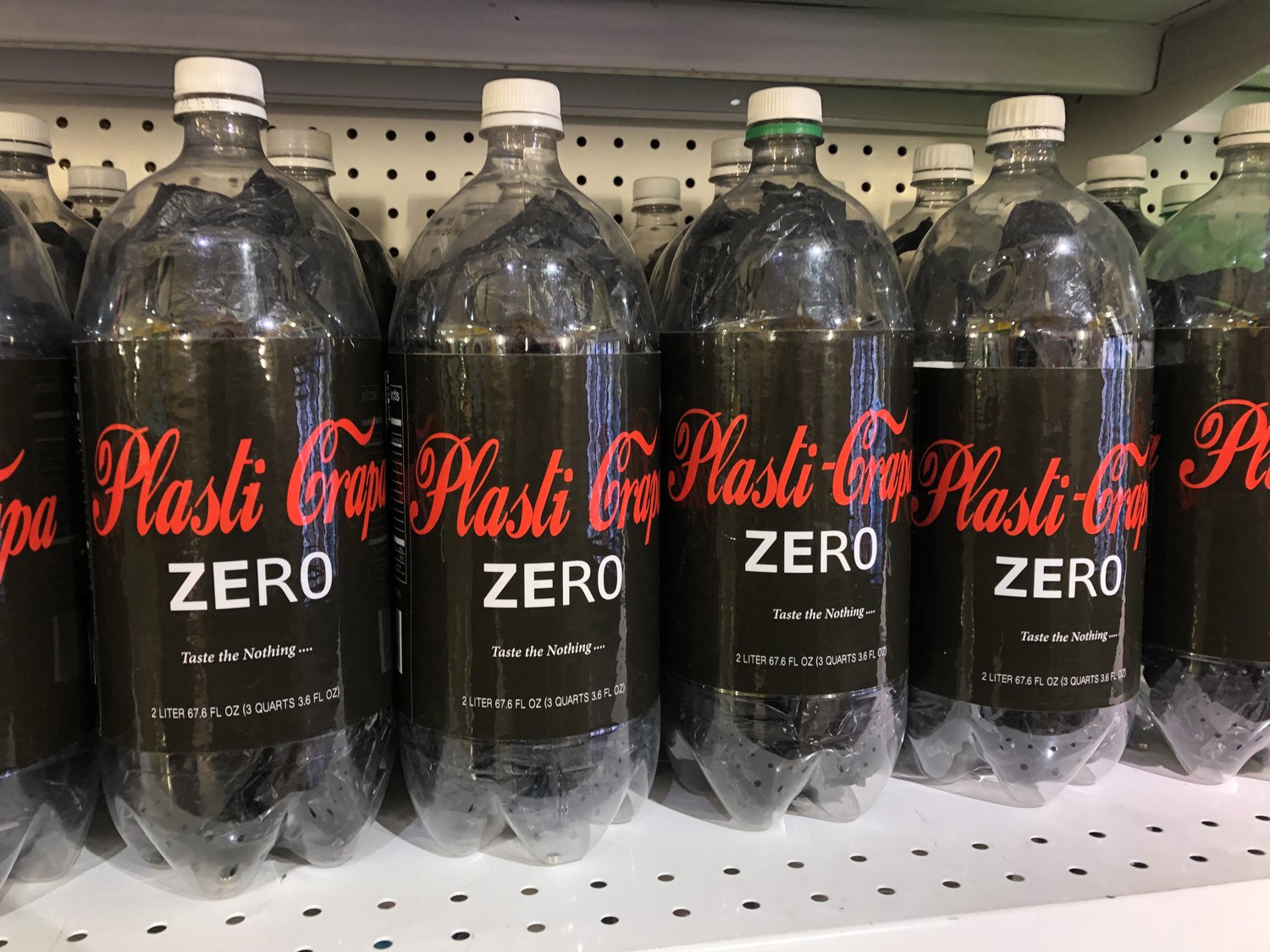
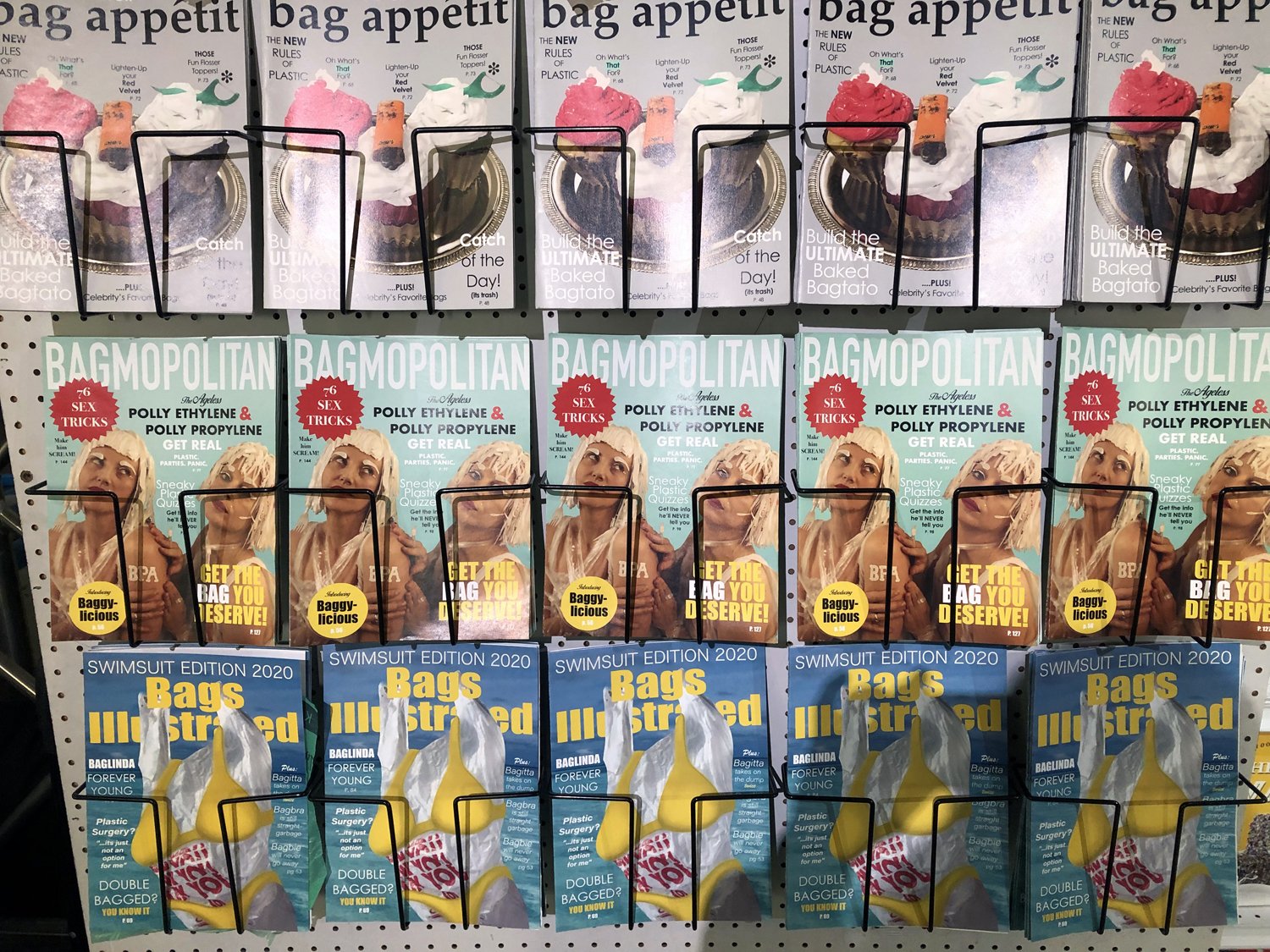
By Laurie Casey
After watching One Earth curated films, attendees always ask, “What can we do?” The answer is always a mix of the little things and the big things. Here’s an example of a big thing—a way of deepening your climate activism to amplify an issue to gain broader awareness.
We all know plastic waste is bad. Individual actions (refusing, reducing, reusing) are good, but limited to your own scope of influence (home, work, etc). Banding together with the broader community is the next logical step. Here’s one path that Julie Moller, waste activist, took.
Julie Moller (left) with her daughter, Ana, at The Plastic Bag Store while it was installed on the ground floor of the Wrigley Building in Chicago.
Julie was instrumental in bringing the art exhibit, “The Plastic Bag Store” to the Wrigley Building on Michigan Avenue in downtown Chicago. The exhibit uses found trash to create a “Store.” The project also incorporated puppets and actors to tell the story of plastic waste’s effects on the planet. She also helped bring “Plastic Bag Store: The Film” to the One Earth Film Festival by bringing it to the attention of our film selection team.
By far, “Plastic Bag Store: The Film” is our most popular film. It’s screening at three public, in-person events and virtually on Friday, March 11, at 6:30 p.m. CST.
“I am so happy the film is part of the Film Fest,” Julie said via email. “I believe the film is powerful. To be able to view Robin Frohardt’s artistry of the puppets, the story line and her amazing cardboard animation is really a unique treat.”
Here’s more from our email interview:
Q: Many people—like you!—are very aware of waste and try to reduce it as much as possible from their homes, kitchens and lives. Does this film have anything new to teach people who already know waste is a huge problem?
Julie: There are three things I think the store gets across. 1. That we really are leaving behind “relics” for future generations to interpret that we may use for ten minutes. 2. The shear volume of plastic we are producing for single use purposes. We are at the point we are just making stuff out of plastic that we didn’t even know we needed such as the plastic stick put into the cup caps so that it doesn’t spill. Who knew? And 3. The context of the grocery store shows that we cannot escape plastic pollution even when we are trying: it is in our food, air and water.
Q: What captured your imagination about this project?
Julie: There are so many layers to this project. I was attracted to it for the art and it being such a clever way to get a message across. The store is so eye-catching and looks like a real grocery store. But what really captured me was the humor: Yucky Shards and Fisherman’s Catch, a frozen dinner with a flip flop in it! I thought, What an incredible way to make people aware of plastic pollution while not throwing a bunch of facts and figures at them. I worked at the “Store” everyday while it was in Chicago, talking to so many groups: students, art students, people interested in the environment, people accidentally walking in, Tik Tok and social media influencers. It created a conversation about single-use plastics and the immense problem it has created, no matter how much you knew or didn’t know about the problem. I like when a story can reach a wide variety of people, not just people working in sustainability.
Q: How did you bring this art exhibit to Chicago?
Julie: The Fall of 2020 when I moved to Chicago from suburban River Forest, I was looking to learn what groups were working in sustainability in the city and how to get involved. I signed up for the Chicago Conservation Corps cohort presented by the Peggy Notebaert Nature Museum. We were in the midst of the COVID-19 pandemic, I thought it would be a good way to meet people (virtually) who want to make change. As part of the class, you have to produce a project in your ward [area of the city], and I had read about the “Plastic Bag Store” exhibit in The New York Times. I noticed all of the empty storefronts on Michigan Avenue [Chicago’s Magnificent Mile] and thought it would be cool to bring the exhibit to Chicago. This disposable plastic would be tied to the high-end stores and the largest freshwater source in the world [Lake Michigan]. So I emailed the producer, Pomegranate Arts to see if it was traveling. And then pieces started falling into place.
Q: What other kinds of collaborations did you create in this process?
Julie: This project means a lot to me because it marries my art background with my obsession with plastic pollution. In fact, it was a friend who I used to work with at the Museum of Contemporary Art who said maybe I should talk to Blair Thomas of the Chicago International Puppet Theater Festival to help produce the show. As it turns out, the Festival had worked with Robin Frohardt before. In fact, the project connected a network of my friends. . . from sustainability work friends, to a friend in commercial real estate, to art friends. . . it was such a great collaboration. The best thing is, I met a group of people working on plastic pollution, and now am working with the Coalition for Plastic Pollution. It was a win-win all around.
To take action on Plastic Waste, visit the Take Action Page that Julie helped curate.
Plastic Bag Store: The Film is screening on Friday, March 11, at three locations in Chicago, as well as virtually.


